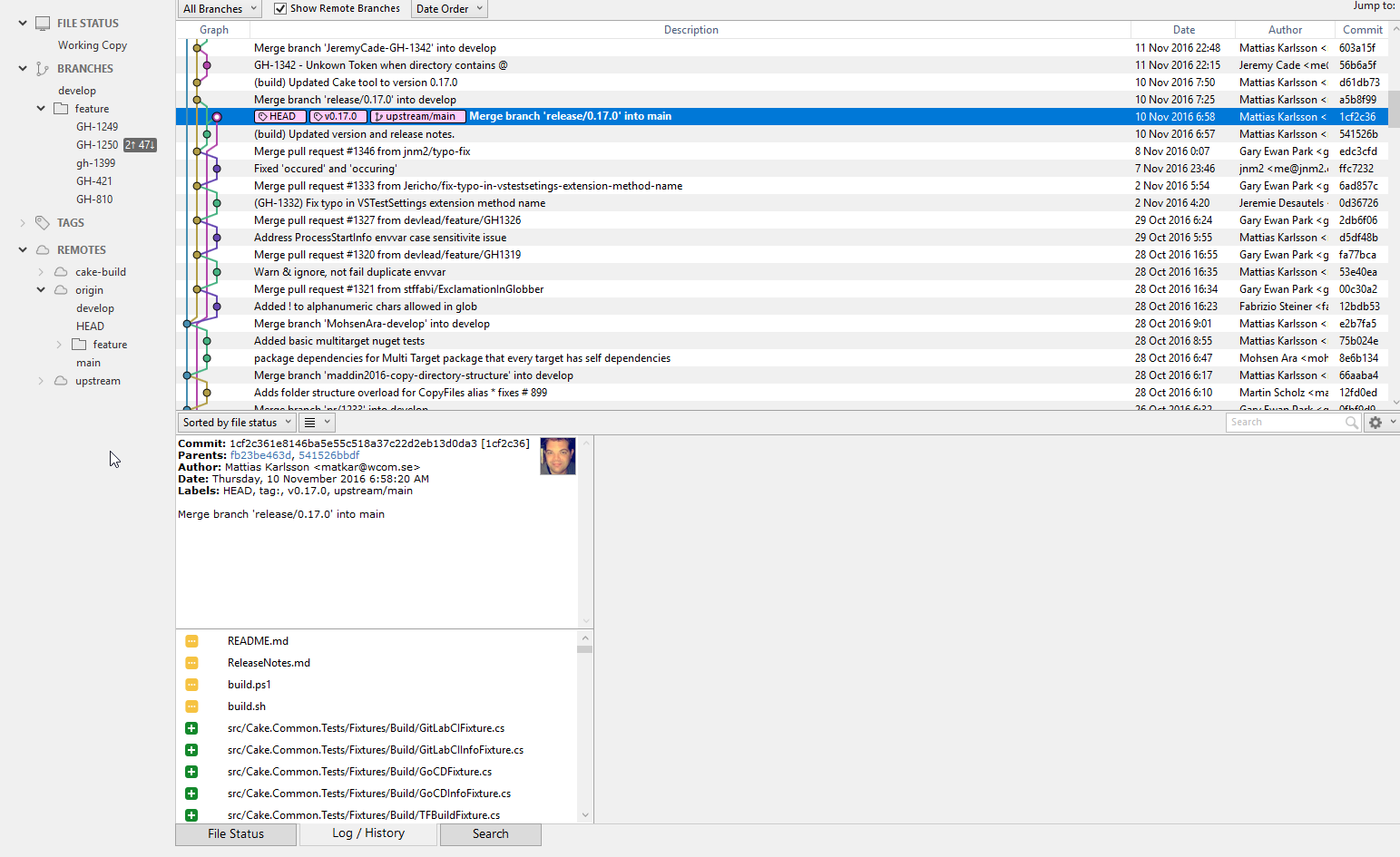

This course tries to be as concise as possible. However, most of the knowledge that you gain in this course applies to Git itself, and you can apply this knowledge to other hosted Git providers (such as GitHub).
SOURCETREE WITH GITHUB FREE
Bitbucket is free for teams of up to 5 people, including private repositories. This course uses Bitbucket () as the hosted provider for remote Git repositories. If you use the command line path through the course, you can also use Linux.
SOURCETREE WITH GITHUB MAC
You can watch the videos and take the quizzes from your phone if you want, but the hands-on labs require you to have a Windows or Mac computer. This page describes the setup of SourceTree on Windows, which has its own little quirks. Besides, repetition is good for learning :) Eventually, you might want to go through both paths, so that you can decide which tool to use for specific tasks. If you are not experienced with a command line, we highly suggest that you go through the Sourcetree path. One path assumes that you have experience using a command line interface, and the other path uses the Sourcetree graphical client. This is especially true if you currently "know just enough Git to be dangerous". This course assumes no previous knowledge of Git, but if you do have experience with it, you may find this course to be both useful and challenging. In this course, you will not learn everything there is to know about Git, but you will build a strong conceptual understanding of the technology, and afterward will be able to confidently dig deeper on any topic that interests you. You could also use Git to manage the many continuously improving revisions of that book that you are writing. It is a core component of DevOps, continuous delivery pipelines and cloud-native computing. It is used by most major technology companies, and is assumed knowledge for many modern programming and IT jobs. This allows the team to continuously improve its product. SourceTree now functions normally for me. Click Refresh OAuth Token’ and all was well. Deleted all the entries under Tools -> Options -> Authentication Add a new GitHub hosting service using HTTPS & OAuth. Git manages team files for large and small projects. installed the latest version of GIT from Git Hub start SourceTree.
SOURCETREE WITH GITHUB SOFTWARE
Git is open source software originally created by Linus Torvalds. Select the branch you want to Push and double-check that the remote repository details are correct.The Version Control with Git course provides you with a solid, hands-on foundation for understanding the Git version control system. Using the dropdown, select your Remote Account, then click OK.Ĭlick OK in the Repository Settings dialog box.īack in the main Sourcetree window, click Push to open up the Push dialog box. Enter in a Remote Name and paste the URL you copied from GitHub into the URL/Path. In the Repository Settings Dialog Box, click Add. With your project open in Sourcetree, go to Repository->Add Remote. Select New Repository.Įnter in your project details and choose whether the repository will be public or private. While logged into your GitHub account in a browser, click the + in the top-right corner of the screen. Click Commit.Ĭongratulations! You will now see your commit logged in the main branch of your project in Sourcetree. Write a short commit message in the box at the bottom of the window. The Unstaged files section in Sourcetree should now reflect these changes and you’ll notice there are fewer files visible. Copy and paste its contents into your local. gitignore file and double-click to open it in a text editor such as Notepad. Click OK.Īll files with the Library/ path should now disappear from the Unstaged Files section. In the Ignore dialog box, select Ignore everything beneath: Library.
Under Unstaged Files, select any singular file with the Library/ path. The 'git init' command will do this, and its what I often use, but Ill use SourceTree in this case to make this a repository. If you are notified that the destination path for the project already exists, click Yes to continue.

Your project details will now be displayed on the screen.Ĭlick Create and wait for Sourcetree to create the repository. Select the top-level folder of your project and click Select Folder. On the Create a repository screen, click Browse. Open up Sourcetree and click + to open a new tab. Note that Sourcetree is only available to Windows and macOS users. Note: This article assumes that you have already linked your GitHub account with Sourcetree. This guide will walk you through the steps of creating both a local and remote repository for your Unity project using Sourcetree and GitHub.


 0 kommentar(er)
0 kommentar(er)
